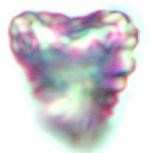...And makes missions successful! February is the month for all things love related and whilst some of our Valentine's were disastrous for NASA's Stardust mission February 14th 2011 turned out to be full of romance.
Space has rarely left the news recently, in particular with the Kepler telescope discovering new, Earth-like planets and the exciting simulated walk on the red planet with the Mars500 project. One of the most exciting discoveries came yesterday when Stardust came within 180km of the comet, Tempel 1. Sending 72 images back to NASA and numerous details about the comet's dust, Stardust will be able to provide great insight into how these huge balls of ice and dust change over time. Comets are thought to contain frozen primordial ingredients that date back to the birth of the solar system some 4.5 billion years ago, information about them could provide us with clues to how the planets and stars form.
 |
| Images taken through the day of Tempel 1 by Stardust, |
The Stardust mission has provided some fascinating insight into the inner workings of the comet, by imaging the surface. It's bigest achievment is providing data on what happened when, in 2005, the Deep Impact sent a less-than-romantic impactor hurtling into the comet. The crater this impact left has a small mound in the centre which suggests that some of the ice which was thrown up in the collision came straight back down. Pete Schultz of Brown University explained the "cometary nucleus is fragile and weak based on how subdued the crater is we see today". He went on to explain that because of the frayed edges of the crater it is obvious the surface has changed since the impact, " the crater partly healed itself." Erosion features, newly formed pits and holes were visible on the surface, clearly altered compared to images sent back from Deep Impact. These all form as the comet moves closer to the sun, causing ice to evaporate off of the surface and form the dust 'tail' of the comet.
This isn't the first time Stardust has given NASA a present on V-day. In 2006 analysis of data sent back from the comet showed some of the comet particles to be heart shaped!


This article is wonderful! I can't wait for more :)
ReplyDelete